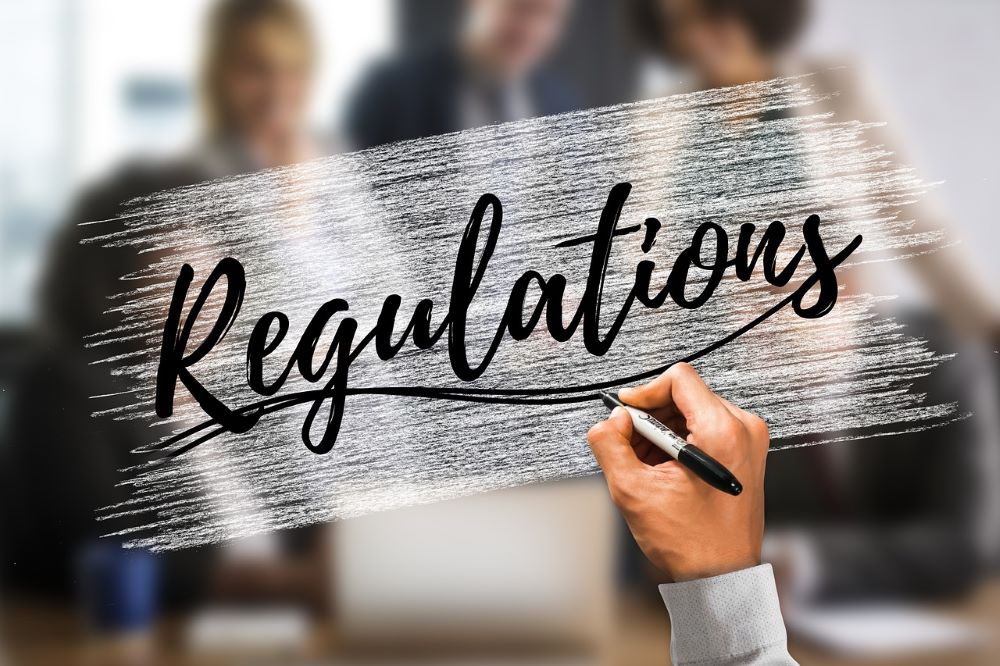Ross McGill
Your W-8 Questions Answered
In our last blog about W-8 forms, we talked a bit about what they are and what they’re used for. We got a lot of questions about W-8 forms off the back of that post, so today I thought it would be a good idea to gather some of them together and answer them. I promise I’ll do my best to not answer each one with ‘it depends’!
If you need an update on the basics of a W-8, click here to read the last article. Otherwise, let’s get into it.
Who Needs to Complete W-8 Forms?
Any non-US investor trying to open an account with a broker or a custodian bank will almost certainly be asked to provide a W-8 (or a W-9 if they’re American). The institution will ask you to fill one in or collect the information they need from their website (called a substitute W-8).
Which Countries Have Double Tax Treaties with The US?
This is a tricky one because double-tax treaties are changing all the time. However, I can tell you that at the time of writing, there are approximately 65 countries that have a tax treaty with the US. Get ready for a long list, because that includes:
- Armenia
- Australia
- Austria
- Azerbaijan
- Bangladesh
- Barbados
- Belarus
- Bulgaria
- Canada
- Chile
- China
- Cyprus
- Czech Republic
- Denmark
- Egypt
- Estonia
- Finland
- France
- Georgia
- Germany
- Greece
- Iceland
- India
- Indonesia
- Ireland
- Israel
- Italy
- Jamaica
- Japan
- Kazakhstan
- Korea
- Kyrgyzstan
- Latvia
- Lithuania
- Luxembourg
- Malta
- Mexico
- Moldova
- Morocco
- Netherlands
- New Zealand
- Norway
- Pakistan
- Philippines
- Poland
- Portugal
- Romania
- Russia
- Slovak Republic
- Slovenia
- South Africa
- Spain
- Sri Lanka
- Sweden
- Switzerland
- Tajikistan
- Thailand
- Trinidad
- Tunisia
- Turkey
- Turkmenistan
- Ukraine
- Venezuela
- United Kingdom
- Uzbekistan
When And Where to Submit Your W-8
No one submits their W-8 or W-8BENEs directly to the IRS. Instead, you send them back to the institution that requested it. They will then be used by the institution to decide whether to let you open an account, how to treat and tax US investment income paid to your account and whether your account is reportable under US anti-tax evasion regulations.
What’s The Difference Between W-8 And W-9 Forms?
Just to add in another issue, there’s also a W-9 form. Thankfully, it’s easy to differentiate the two.
W-8 forms are for non-residents of the US only. That includes international students, who will need to file a W-8BEN where necessary.
W-9 forms are for citizens and residents of the US. So if you’re a US resident for tax purposes, then you’ll need to provide a W-9.
How Long is a W-8BEN Valid For?
It does depend (sorry).
Provided none of the details on the form change, your W-8BEN will be valid for three calendar years from the end of the year in which you sign it. So, if you completed the form on the 28th of March 2024, it will be valid until the 31st of December 2027.
There is another quirk of the system, but it shouldn’t affect you. Your financial institution is collecting these W-8s to document your tax status under two different “chapters” of the US Internal Revenue Code – Chapter 3 and Chapter 4. The quirk is that if your financial institution is only collecting the W-8 solely to document your Chapter 4 status, then the form is valid indefinitely or until you have a change in circumstances. The three-year validity rule only applies if you’re expecting to receive US investment income into your account, so the financial institution needs to know your Chapter 3 status too.
What’s The Difference Between a W-8BEN and a W-8BENE?
There are a few differences between the W-8BEN and the W-8BENE. The main one is that the W-8BENE is the form for ‘entities’, meaning any type of business or other type of institution that has more than one owner. That could be a corporation, certain types of partnership or trust, exempt entity, public and private foundations, international organisations and even foreign governments.
The default US tax rate for income received by foreign businesses is 30%, but this form will allow the business to receive a tax treaty reduction if it’s applicable and if it’s properly claimed on the form. In particular, the entity has to make a certification on the form to show that it meets what is called the limitation on benefits test.
The W-8BEN on the other hand, applies to income paid to individuals. So while the outcome is similar, the forms are aimed at different categories of people and types of account holders.
We went over these differences in more detail here.
What Happens If I Fill in the Form Incorrectly?
There are estimated to be around 900 million W-8s in circulation and about 30% are completed incorrectly in Europe. That failure rate rises to about 70% in Asia. That’s because it’s an American tax form, it’s not simple and it’s not written in plain English. Differences in language, culture and levels of understanding can affect whether you understand what you’re signing.
The big thing to recognise is that the form is signed under penalty of perjury. This means that if you fill the form in incorrectly, whether that’s deliberate or accidental, and your financial institution taxes your US income at the wrong rate, you’re the one on the hook for liability, not them.
In the end, most financial institutions are very conservative. If there is any doubt, they will tax at the maximum rate of 30%. That means that you may be over-taxed through no fault of your own. In such cases, if your financial institution is a qualified intermediary (QI), then you can ask them for a refund because their contractual agreement with the IRS obligates them to do so. If they are not a QI, then you can, in theory, file a claim directly to the IRS for a refund. The process is not simple or quick and you’ll need to ask your financial institution for a form 1042-S to prove that they over-taxed you. Then, if you’re an individual, you can file a claim on a form 1040-NR together with your 1042-S (and other supporting evidence). If you’re filing a reclaim request for an entity that was over-taxed, the form will be an 1120-F.
Who Can Help Me?
Us! At TConsult we have over 20 years’ experience in the financial services industry, particularly dealing with US withholding tax and all that comes with it. Our subject matter experts have detailed knowledge of the governments and financial institutions in over twenty-seven countries, making us perfectly placed to handle your W-8 questions and support you through the process.
We created an online platform for W-8 forms to be used by financial institutions. So, if you work for a financial institution that provides access to the US securities markets, you should get a demonstration of our Investor Self-Declaration (ISD) system. This collects all the required information for a substitute of all the W-8 forms or W-9 and makes sure that you don’t make any mistakes.
If you would like to know more, or if you’re a financial institution struggling with compliance, or you have questions about a W-8, W-8BEN or W-8BENE, just get in touch with one of our experts today.
Articles
Gain deeper insight with articles that give our considered opinion and predictions of where the industry will go next.
第 899 條:對 QI 的影響
Our new white paper examines the enforcement of remedies against unfair foreign taxes in Section 899 of President Trump’s “One Big Beautiful Bill”, and its implications for QIs, NQIs under the QI Agreement and CFIs under the FASTER Directive.
Section 899: Implications for QIs (Update)
We provide an update to our earlier white paper examining the enforcement of remedies against unfair foreign taxes in Section 899 of President Trump’s “One Big Beautiful Bill”, and its implications for QIs, NQIs under the QI Agreement and CFIs under the FASTER Directive.
Section 899: Implications for QIs
Our new white paper examines the enforcement of remedies against unfair foreign taxes in Section 899 of President Trump’s “One Big Beautiful Bill”, and its implications for QIs, NQIs under the QI Agreement and CFIs under the FASTER Directive.

第 899 條:對 QI 的影響
July 9, 2025Our new white paper examines the enforcement of remedies against unfair foreign taxes in Section 899 of President Trump’s “One Big Beautiful Bill”, and its implications for QIs, NQIs under the QI Agreement and CFIs under the FASTER Directive.Read more

Three Questions You Need to Ask If You Invest in US Securities
June 26, 2025TConsult does not give of offer tax, legal or investment advice. This material is for educational purposes only. If you […]Read more

Section 899: Implications for QIs (Update)
June 25, 2025We provide an update to our earlier white paper examining the enforcement of remedies against unfair foreign taxes in Section 899 of President Trump’s “One Big Beautiful Bill”, and its implications for QIs, NQIs under the QI Agreement and CFIs under the FASTER Directive.Read more

Section 899: Implications for QIs
June 13, 2025Our new white paper examines the enforcement of remedies against unfair foreign taxes in Section 899 of President Trump’s “One Big Beautiful Bill”, and its implications for QIs, NQIs under the QI Agreement and CFIs under the FASTER Directive.Read more

The Swiss Changes, And Their Impact
April 17, 2025If you’re tuned into the tax industry, you might have already seen that Switzerland is moving from being a Model […]Read more

有簽署協議的外國金融機構面臨的問題
April 9, 2025這將會是一篇非常簡短的部落格文章(相較於我們其他的文章),但我們想澄清一些我們在業界注意到的混亂狀況。我們看到越來越多的新QI客戶已經取得GIIN,以履行他們的FATCA義務。到目前為止,一切都很好。但他們接著又在FATCA註冊系統中將其FATCA分類註冊為「有簽署協議的外國金融機構(participating FFI)」。這是可以理解的選擇,但在大多數情況下,這是不正確的。因此,讓我們把事情弄清楚。 IGAs 當FATCA於2010年首次頒布時,許多司法管轄區尚未與美國簽訂IGA。IGA並不普遍。在2010年到2014年之間,它們變得越來越普及,主要是因為很多司法管轄區發現,為了遵守FATCA,他們的金融機構必須違反保護客戶和帳戶持有人機密的國內資料保護法規。IGA是一種方便的變通方法,它允許金融機構向其國內稅務管理機關申報帳戶,因此不會違反國內法律。之後,就由稅務管理機關將資料傳送到司法管轄區境外的美國。 外國金融機構協議 2010年的FATCA基本運作模式是,如果金融機構想要遵循法規,就必須「簽署」外國金融機構協議(FFA)。此協議與QI協議並行,因此同時為兩者成員的金融機構會被歸類為「有簽署協議的FFI」或簡稱P-FFI。未簽署協議的金融機構則被歸類為「未簽署協議或NP-FFI」。 隨著參與IGA的司法管轄區越來越多,術語也發生了變化。在IGA司法管轄區中受到約束的金融機構不再是「有簽署協議的FFI」,而是根據與其居住國相關的IGA Model 1或Model 2被描述為「申報式外國金融機構(Reporting FFI)」。今天的FATCA用語是,金融機構將成為「申報式 Model 1 IGA FFI」或「申報式Model 2 IGA FFI」。雖然Model 2 IGA […]Read more

The Problem With Participating FFIs
April 9, 2025This is going to be a very quick blog post (compared to our others), but we wanted to clear up […]Read more

1042-S截止日期的問題
March 7, 2025我們很快就要到1042-S美國納稅申報季節了。意味著這是TConsult和金融機構滿腹牢騷的時節之一。因為每年都會發生一些不該發生的事情。但卻經常發生,通常是因為一件事。提交1042-S資訊申報表和1042報稅表的截止日期是3月15日(除非該日期恰逢週末,在這種情況下,截止日期是下一個工作日)。表面上看來這似乎不是什麼問題,但這會造成兩個問題。 問題1 第一部份的問題是,同一截止日期適用於支付鏈中的所有金融機構。每個人都應該在該日期或之前提交兩份申報表。此外,由於申報系統是串聯式的,一家公司所提交的1042-S申報表,必須與其交易對手所提交的申報表總數相符(也就是說,您的交易對手所申報支付給您的金額,必須與您所申報支付給客戶的金額相符)。如果不相符,您可能會收到罰款通知、罰款和/或要求償還少扣的稅額及利息。 問題2 第二個問題是,在提交1042美國報稅表時,金融機構(無論是QI或NQI)必須附上從交易對手收到的1042-S表單收款人副本。這是為了讓IRS可以查核整個支付鏈帳目,並找出是誰出錯。 現在,大多數人知道美國允許1042-S申報表展延30天,1042申報表展延6個月。但幾乎每個人都會自動申請這些展延,所以真正的提交日期會改變。今年,由於3月15日是週末,1042-S申報表的標準截止日期是3月17日,延長的截止日期是4月16日,1042申報表的延長截止日期是9月1日。但這些日期的位移只是將比對問題移動,並沒有解決問題。 骨牌效應 我們太常看到的問題是,在支付鏈中下游的金融機構延遲向客戶提供這些表單。更糟的是,他們根本就沒有提供。有時是因為他們不知道這項義務或IRS相關罰則,但有時是故意的。 對QI而言,這些義務已清楚載明在QI協議的第8.02節中。如果有任何疑問,1042-S表單的結構也清楚說明了這一點。A副本給IRS,B、C和D副本給收款人。因此,如果您的客戶正在使用綜合帳戶(omnibus accounts),那麼就申報而言,您的客戶就是收款人,必須收到收款人副本。如果您的客戶是QI,您可以參考第8.02(A)節,如果他們是非揭露式NQI,請參閱第8.02(E)節。 當機構沒有收到這些1042-S收款人副本,或是收到的時間延遲,就會對收款人和發行人造成嚴重的問題。我們已經看到許多金融機構不得不勾選8809表單上第7行的勾選框提出展延申請,以表示他們沒有及時收到1042-S來準備資訊申報表。有些金融機構甚至沒有收到1042-S的資訊,而是以電子表格或類似的方式收到。這本身不是一個大問題,但關鍵是要確保電子表格上的資料是您的交易對手在向IRS提交1042-S時所使用的資料,而且您最終會收到正式的1042-S(或替代表單)。 因此,訊息是什麼 基本上,是為了讓金融機構履行其義務。如果您的客戶中有收取美國來源FDAP所得(通常是股利和投資組合利息)的金融機構,那麼您務必向他們提供1042-S表單的收款人副本,並將其納入您的IRS申報中。 如果您想要做到真正的客戶友善,您可以寄給收款人一份試算表,其中包含用來產生1042-S表單的資料,包括將反映在1042-S表格上的全年逐筆付款明細、所得、免稅額、收款人代碼和稅率。然後,您就可以進行自己的申報,並在完成自己的申報後,立即向收款人提供正式的收款人副本。這表示您的客戶可以準備他們自己的1042-S報稅,支付鏈中的每個人都可以履行他們的義務,而無需向IRS正式投訴。 在TConsult,這是我們最大的難題之一,也是我們看到許多金融機構正在掙扎的問題。如果您無法管理您的申報,或不確定您的義務是什麼,我們可以幫助您。請立即與我們聯絡,與我們的主題專家討論。 Read more

The Problem With The 1042-S Deadline
March 7, 2025We’re fast approaching the 1042-S US information return season. Which means it’s one of the times that causes a lot […]Read more

FATCA、FASTER與TRACE –
February 24, 2025我們知道,我們知道。它同時包含了相同子母不同排序的一堆名詞!這可能會讓人有點困惑,尤其是當您試圖找出哪些法規適用於您,以及美國、歐盟和經合組織(OECD)的所有主要稅務法規之間有何差異時。今天的部落格文章將會簡要介紹這些法規的內容、差異,以及每項法規可能在何時適用。 FATCA 金融機構經常面臨的挑戰是如何計算出他們所要遵守的法規的數量,這意味著他們很少與投資人溝通這些法規的複雜性,或者他們要通過哪些關卡才能獲得讚賞。我們可以很有信心地說,鑑於開戶時最常見的合規問題是關於開戶所需文件的數量和類型。這就是為什麼金融機構在與投資人溝通時需要更清楚的原因。 無論如何,對金融機構來說,開戶是一個特別困難的時刻。他們不僅要遵守「認識您的客戶(或稱KYC)」法規,還要利用這個機會收集其他文件和資料,以支援客戶不斷的需求。如果客戶打算投資或開立存款帳戶,他們幾乎肯定需要稅務文件,因為他們將受美國稅務法規的約束 – 即FATCA,甚至潛在地QI。重要的是要記住,稅務文件不是KYC的一部分,儘管機構採取這種做法具有效性爭議。 客戶通常不瞭解的是,FATCA 是所謂的負面表列系統。畢竟,FATCA的目的是識別和報告在美國境外擁有金融帳戶的美國人。問題是,僅證明您的客戶不是什麼人是不夠的 – 您必須證明他們是什麼人。無論如何,就美國稅務分類而言。如果真的這麼簡單,大多數金融機構就會使用勾選框,讓客戶確認他們不是美國人! 因此,金融機構必須對每位客戶做一些盡職調查,以找出他們在FATCA中應該如何分類。這對於個人來說相當簡單,但對於實體來說就複雜得多,因為實體更有可能被用來逃稅,所以IRS需要的資訊遠比只是「我們不是美國人」來得多。 而且這只是其中一項法規!讓我們看看其他幾項。 FASTER與TRACE 您可能也聽過FASTER與TRACE FASTER是歐盟指令,將於2030年生效。TRACE是經合組織(OECD)的一項稅務倡議,到目前為止只有芬蘭實施。FATCA、FASTER和TRACE之間的區別很簡單。FATCA是一項反逃漏稅法規,透過將政府間協定轉換為國內立法來實施。另一方面,TRACE和FASTER都是透過國內立法實施(或將會實施)的就源稅務減免法規。FATCA適用的唯一稅項是30%的違規罰金。FASTER和TRACE所徵收的稅項是適用於雙重租稅協定的跨境投資所得裡較低的租稅協定稅率。 在FASTER生效之前我們還有幾年的時間,但別傻了!從現在到那時候,還有大量的工作要做。當然,芬蘭處於一個特殊的位置,因為它是歐盟成員國,將受到FASTER指令的約束,但它也已經擁有TRACE稅務減免系統。因此,對於芬蘭而言,最大的問題是它目前使用的TRACE法規是否會被視為FASTER指令所定義的「全面就源減免制度」。 經合組織38個成員國中有22個(58%)也是歐盟成員國。因此,儘管TRACE系統對OECD成員國而言是自願性的,但FASTER指令對歐盟成員國而言卻是(或將是)強制性的。除非OECD能在歐盟內部建立TRACE的等效性,否則TRACE不太可能被任何其他歐盟成員國採用。無論等效性如何,它對芬蘭來說都是非常重要的。 所以,就是這樣。FATCA、FASTER與TRACE。影響金融機構和投資人的三套法規,每套法規都有不同的組成部份(文件紀錄、盡職調查、預扣和申報),將影響金融公司如何招攬新客戶。這不再只是KYC的問題。金融機構必須適應,主要是因為我們之前談到的溝通障礙。大多數投資人對這些都不太了解,更不知道為什麼要這樣做,這也是為什麼他們可能會抱怨太多的文書工作,以及當相同的問題被反覆詢問時,太多的重複工作。可喜的是,最近的法規大多允許更多的標準化和自動化。對於具前瞻性的公司而言,這是尋找並實施新數位化系統的大好機會,讓客戶的旅程變得更順暢。而且我們敢說,更快速! 如果這一切聽起來有點複雜,或者您需要一些幫助來找出您的機構在這一切中的定位,那麼我們可以幫助您。立即聯絡我們的團隊,與我們的主題專家預約免費諮詢。 Read more
Ross is the founder and chairman of TConsult. He has spent over 26 years working in the withholding tax landscape with companies developing tax reclaim software and operating outsource tax reclamation services.
Ross not only sees the big picture but is also incredibly detail oriented. He can make even the most complex issues simple to understand. He has authored 10 books (including two second editions) on various aspects of tax, technology, and regulation in financial services, making him one of the leading authorities in the world of tax.






